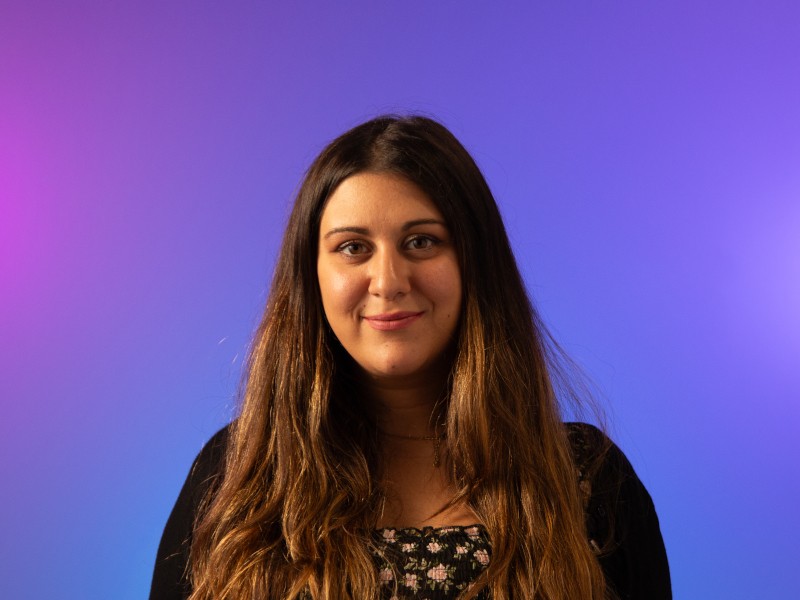Iman El Sayed of Accenture Song talks about the “rollercoaster” of AI and automation and how it will impact UX design.
![]()
As disruptive technologies continue to integrate into nearly every sector of society in recent years, exposure to the emergence of advanced AI and automation capabilities is almost inevitable.
From online payment integrations to HR processes, automation and AI are being used in just about every sector, and as Iman El Sayed points out, the design industry is no exception.
El Sayed, a design experience consultant at Accenture Song, said automation tools have existed in the design field for some time, but these tools were more “micro-level,” like Adobe Illustrator's auto-trace feature.
“These functions took on repetitive manual tasks,” she says. “What we're seeing today is a whole different level of AI automation. In addition to handling the manual tasks, AI is also taking over some of the 'thinking' and creative work.”
“These are attributes that until recently were only associated with humans, but are now increasingly integrated into AI systems to aid in idea generation, decision-making and even the automated generation of creative content.”
Ride a roller coaster
Speaking of the overall impact of AI automation on the UX industry, El-Sayed quoted well-known web usability consultant Jakob Nielsen, who said the industry is “moving from command-based interactions to intent-based interactions.”
“Users no longer instruct computers on specific actions, but rather specify desired outcomes. For us as designers, this means we need to shift our focus to a deeper understanding of user intent, and to design systems that can effectively interpret and fulfill that intent.”
With the widespread integration of AI and automation across industries, it's not surprising that a significant number of workers have concerns, especially about job security. But El Sayed said, “It's natural to feel fear and anxiety about the unknown.”
“If you're a designer, chances are you're curious and have already tested and used many of the AI tools available today,” she adds. But AI is advancing so quickly that it's hard to predict what's going to happen, which naturally raises fears and concerns. But El Sayed likens the evolution of this technology, and her own interaction with it, to a roller coaster.
“Even if I stand at the entrance and express my concerns and doubts, the ride still operates,” she says. “My way of dealing with this is to get in line, fasten my seat belt, enjoy the ride, and use the momentum to experience something exciting and new.”
redesign
When it comes to integrating AI and automation into design workflows, El Sayed believes that “starting small is key.”
She suggests that design leaders should allow their teams to openly express their fears and ambitions for new tools, emphasizing that new technology is meant to make their jobs easier, not replace them.
“Start by asking ChatGPT to give you a complex overview and create a simplified version that's easy to understand,” she says. “For user interviews, use an AI transcription tool like Otter.ai to take notes and summarize key points.”
“There are AI tools at nearly every stage of the design process, and approaching these tools with a sense of curiosity and playfulness will help designers unlock their full potential and seamlessly integrate them into their creative workflow.”
El-Sayed predicts that integrating AI into UX design will primarily improve productivity, creativity, and flexibility if the technology is used responsibly. For example, ChatGPT could reduce the anxiety and procrastination sometimes experienced when starting a new project by asking the chatbot to create a project plan or brainstorm ideas, she says. And if designers are stuck creatively, AI tools could be used to create mood boards or color palettes.
But beyond the benefits, she says designers still have a lot to learn when it comes to using AI in the “right way” and avoiding potential pitfalls.
One pitfall she points out is “defaulting to AI chatbots as the solution for clients looking to improve customer experience without understanding the emotions surrounding their customers.”
“Despite recent advances, many chatbots still lack personalization, and customers often struggle to see their value while also worrying about their privacy.”
What is UXpect?
As the integration of AI and automation becomes more commonplace, we spoke to El Sayed about how he thinks this integration will impact the future of UX design.
She says that now, more than ever, there is a focus on a “product-focused, action-oriented approach” to UX design.
“For designers, this means working closely with AI experts and data scientists and continually upskilling to keep up with new technologies and the changing demands of the job market, but also learning as much as possible about how AI algorithms work and how to leverage AI-driven insights to create the best user experiences,” she says.
“As designers, we must remember that our job is to provide a human perspective. We must strive to design AI systems that are not only efficient and innovative, but also fair, inclusive, and respectful of individual privacy and rights.”
“This means being mindful of bias, transparency, and the potential impact on user trust and societal norms.”
She believes new skills required of UX designers will include knowledge of conversational design and a “deeper understanding of human psychology.” Some designers may also branch out into new technologies such as VR and AR to explore new ways of experiencing digital content.
“Personally, I'm excited about all the changes AI is bringing to the UX industry. It's an exciting journey that opens up unprecedented opportunities where technology and human-centered design converge.”
Find out how emerging technology trends will shape tomorrow in our new podcast, “Future Human: The Series.” Listen now on Spotify, Apple, or wherever you get your podcasts.



